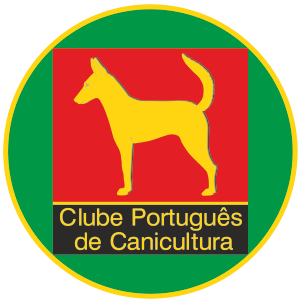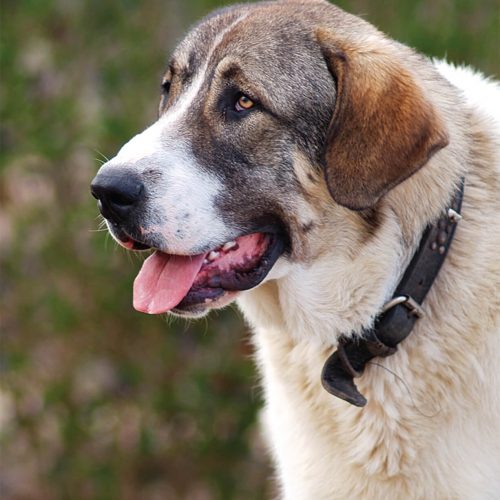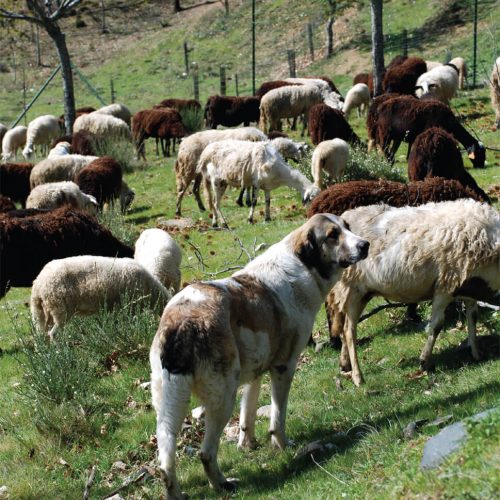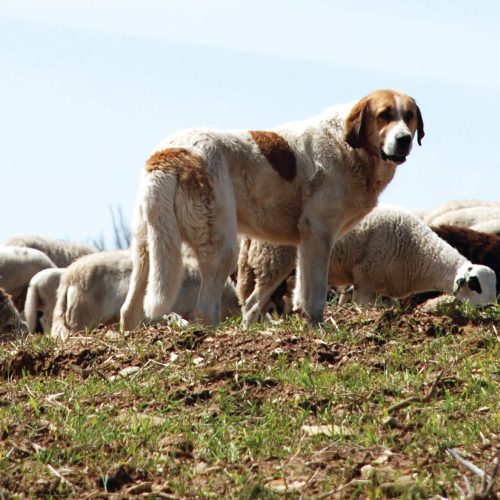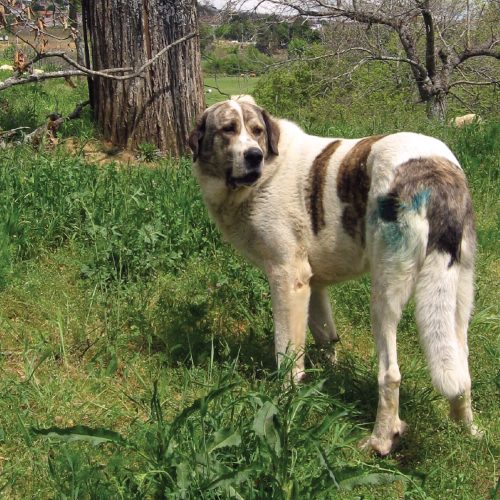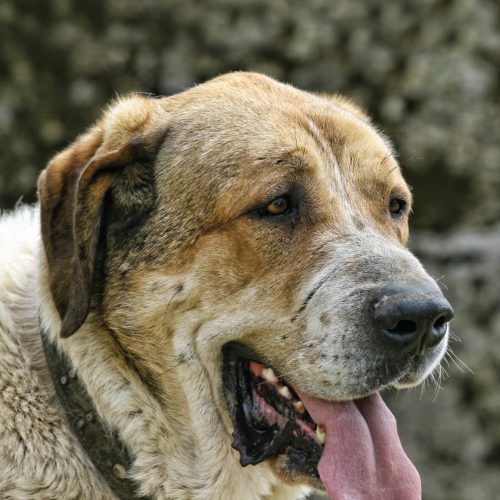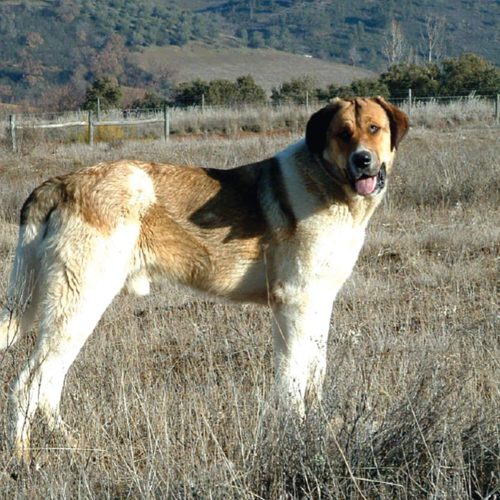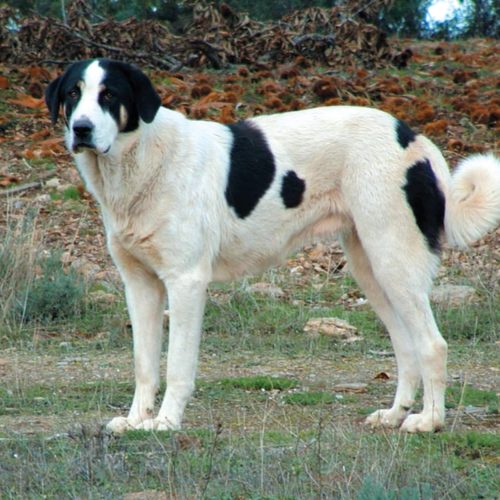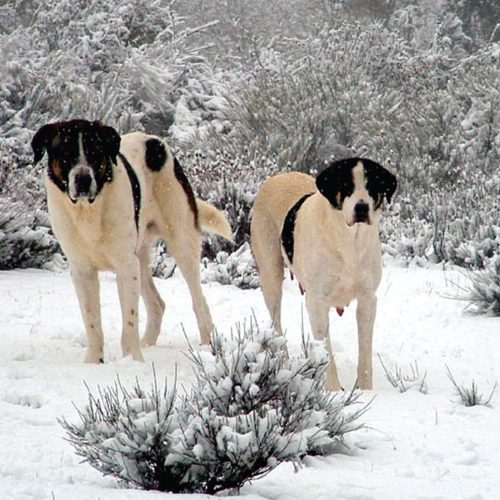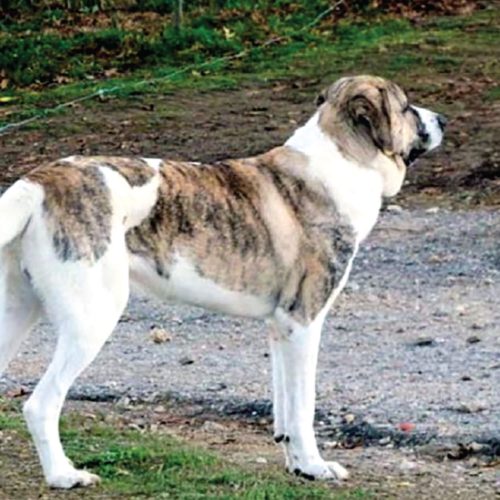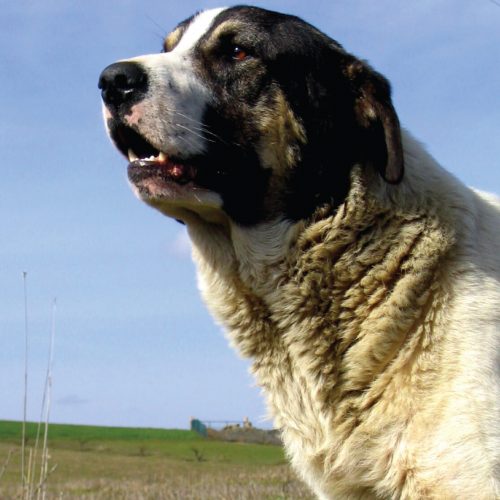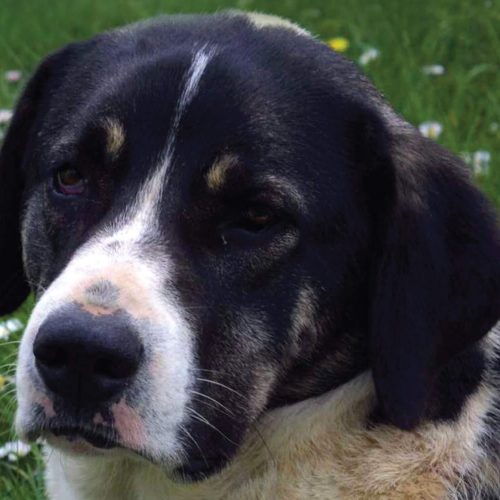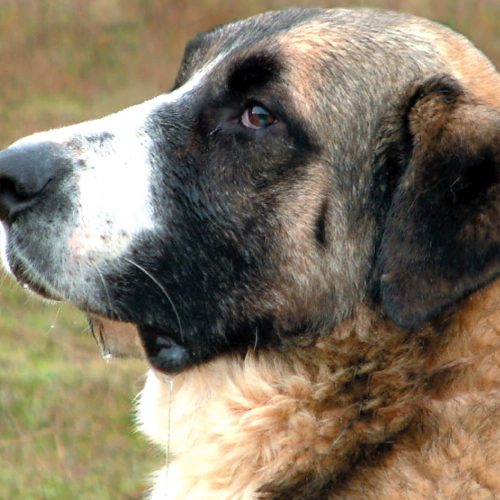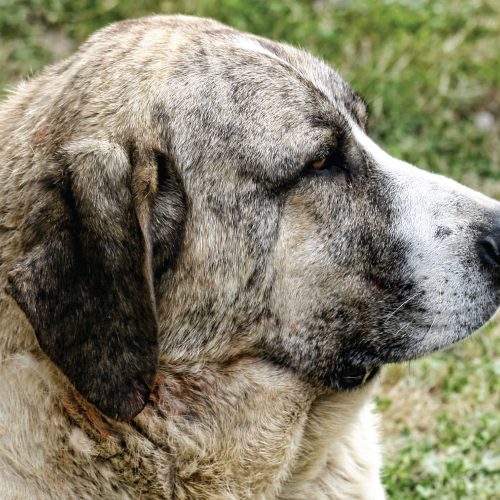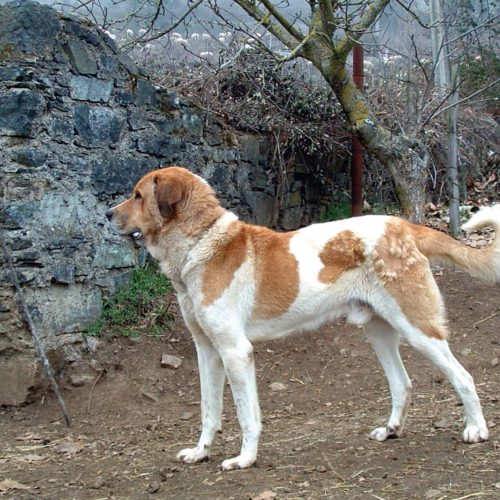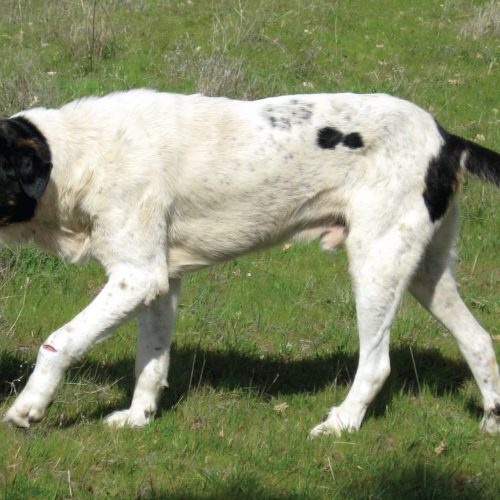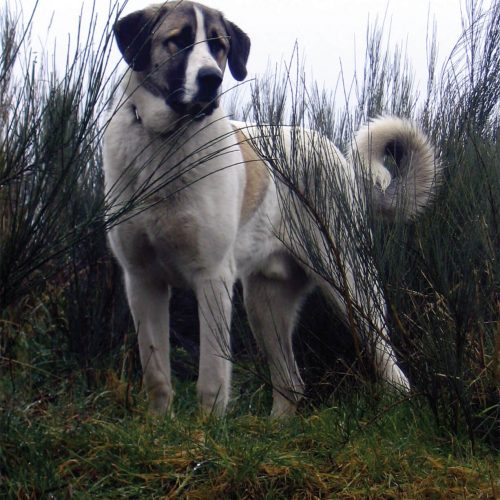Transmontano Mastiff
Portuguese breed recognized by the FCI
Origin | Trás-os-Montes – Portugal. |
Utilization | Livestock guarding dog for sheep and goat flocks. |
F.C.I. Classification | Group 2 – Pinscher and Schnauzer, Molossoid breeds, Swiss Mountain and Cattle Dogs.
Section 2.2 – Molossoid breeds, Mountain type. Without working trial. |
Height and Weight | Height at the withers:
Males: 75-85 cm. Females: 68-78 cm. Weight: Males: 60-75 Kg. Females: 50-60 Kg. |
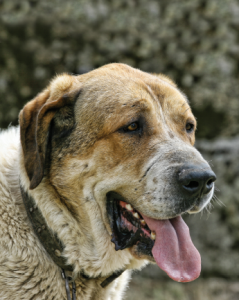
Brief Historical Summary
The origin of this breed is common to the history of all Iberian mastiffs and its evolution is linked with Peninsular transhumance routes.
It is a companion of the shepherd with specific duties in guarding against wolf attacks, since ever abundant in the area. In remote times, this dog settled in the Portuguese highlands, namely in Trás-os-Montes.
In this mountainous area, characterized by steep pastures of difficult road access, the breed adjusted to the region’s conditions and sheep and goat flocks that, traditionally, graze in these areas, evolving until it its morphological traits were defined, in perfect symbiosis with the conditions and work demanded.
Behaviour/Temperament
Despite its size it is a docile but reserved dog. It is cautious without being aggressive, always calm and with a serene expression. It is an exceptional guard when protecting flocks against wolf attacks, always attentive in its duty.
Lives and socializes with other males without conflict, imposing a dominance hierarchy when living in groups with breeding females, and it is normal seeing them outnumbering females in flock guarding, which is never done by a single animal.
In the contact with strangers, after an initial reserve, it allows handling without problems, being very sensitive to gentle treatment and attention.
General Appearance
Large molossoid dog, strong and rustic, standing out by its imposing and noble look and sober expression.
Square profile, with high limbs, strong bones, naturally straight and upright, slightly tucked in belly and moderate hindquarters angles.
This breed shows clear sexual dimorphism, the males being noticeably higher and bulkier than females.
Important Proportions
Almost square in shape; Convex in profile.
Height at the withers and body length are almost equal.
The height at the elbow is noticeably higher than half the height at the withers.
Head
Big and massive, but not too bulky in relation to the body, with convex profile and parallel longitudinal superior cranium-facial axes; a slight divergence of axes is acceptable.
Cranial Region
Skull: Moderately wide and somewhat convex on both axes; Apparent superciliary arches.
Stop: Moderate.
Facial Region
Nose: Oval and big, with well open nostrils, preferably black or dark coloured.
Muzzle: Slightly shorter than the skull, with convergent cheeks and obliquely truncated; Slightly convex transversally, with straight profile.
Lips: Overlaid, of regular thickness, slightly pendulous and slightly rounded, with apparent commissures and well cut mouth. The mucous membranes are black pigmented.
Jaws: Strong, well developed and well muscled.
Teeth: Strong and well developed. Scissors or pincer bite.
Eyes: Medium-sized and almond shaped, honey brown in colour or darker. Slanted and set semi-frontally. Black pigmented lids. Serene expression.
Ears: Medium sized, slightly longer than wide, triangular, medium-high set (above the eye line), with rounded tip and very fleshy. Very mobile and hanging, they may also pull back and fold vertically. In attention they fold towards the front.
Neck
Medium sized, straight, strong and well muscled; with apparent, simple, and not excessive dewlap. Loose neck skin.
Body
Strong, not too voluminous, well muscled. Height at the withers should be equal to body length.
Top line: Straight.
Withers: Well set into the base of the neck, with long shoulder blade and average scapula-humerus angle (110º).
Back: Short, firm, straight, wide and well muscled.
Croup: Of medium length, moderately wide and sloping.
Chest: Wide and moderately large, well developed with moderately sprung ribs. The chest is voluminous. It reaches the elbow without passing it.
Underline and belly: Slightly uprising from sternum to belly, leading to a slightly tucked belly.
Tail
Entire and thick, well covered with hair, of medium set and size, not reaching over the hock. Hanging sabre shaped, but may curve at the tip, in motion it is carried high, sickle-shaped, may even curl.
Forequarters
Strong, long, straight and parallel when seen from the front.
Upper arm: Strong, long and well developed. Forearm: Long and vertical, with cylindrical bones.Elbow: Close to the chest, never turning out.
Carpus (Pastern joint): Strong joint.
Metacarpus (Pastern): Very upright and almost straight.
Forefeet: Strong, voluminous and round, with tight and arched toes. Thick, high and hard pads.
Hindquarters
Strong and muscled, parallel when seen from behind. Moderate femur-tibia angle.
Thigh: Long and well muscled.Leg: Long and muscled.
Hock: High, wide and strong.
Metatarsus: Proportioned to limb height, with simple or double dewclaws.
Hind feet: Oval or round.
Gait/Movement
Thick texture and loose in the neck, forming simple dewlap, and at the withers; it is much thinner on the head than on the rest of the body.
Skin
De textura bastante grossa e solta na região do pescoço, onde forma barbela simples e no garrote; é bastante mais fina na cabeça do que no corpo.
Coat
Thick, of medium length and abundant.
HAIR: Smooth and very dense. With obvious undercoat.
Shorter and thinner hair in the head, ears, muzzle and limbs.
COLOUR: The most common colours are white with black, yellow, fawn or wolf grey markings. The solid colours are fawn, yellow or wolf grey, brindled or not.
In these colours white markings on forefeet, feet or both, as well as a white blaze on the head are commonly seen. It may be ticked in the body or have tan in the cheeks and eyebrows and anal region (tricolour).
Faults
Any departure from the foregoing points should be considered a fault and the seriousness with which the fault should be regarded should be in exact proportion to its degree and its effect upon the health and welfare of the dog.
Muzzle: Pointed and funnel-shaped muzzle.
Eyes: Yellow, loose lids.
Neck: Excessive or double dewlap.
Body: Thin bones.
Back: Excessive length (longilinear).
Pasterns: Lack of uprightness or too sloping.
Tail: With hook.
Severe Faults
Head: Too bulky.
Skull: Too convex.
Skull / Muzzle: Convergent or excessively divergent longitudinal superior cranium-facial axes.
Muzzle: too short.
Nose: Flesh coloured or marbled nose.
Jaws: evidently undershot or overshot.
Eyes: Big, round or prominent. Lack of pigmentation of the lids.
Ears: Of low set, excessively small or thin.
Body: Wide chest reaching below the elbow. Barrel-shaped chest.
Feet: Splayed fore – and hind feet.
Coat: Not dense enough and too short in the body. Lack of undercoat.
Colour: Solid black and solid white.
Notes:
Any dog clearly showing physical or behavioural abnormalities shall be disqualified.
N.B.: Male animals should have two apparently normal testicles fully descended into the scrotum.
